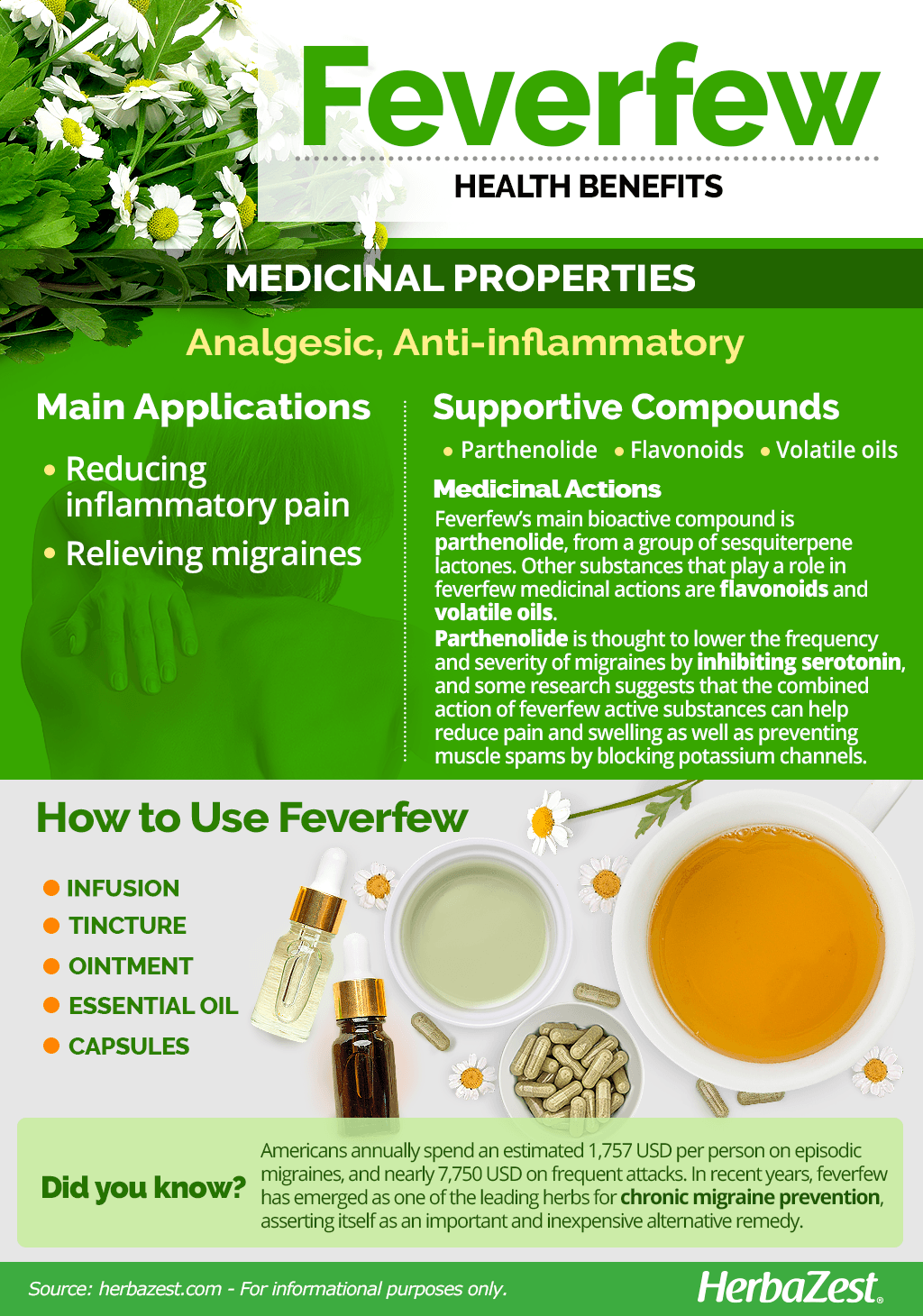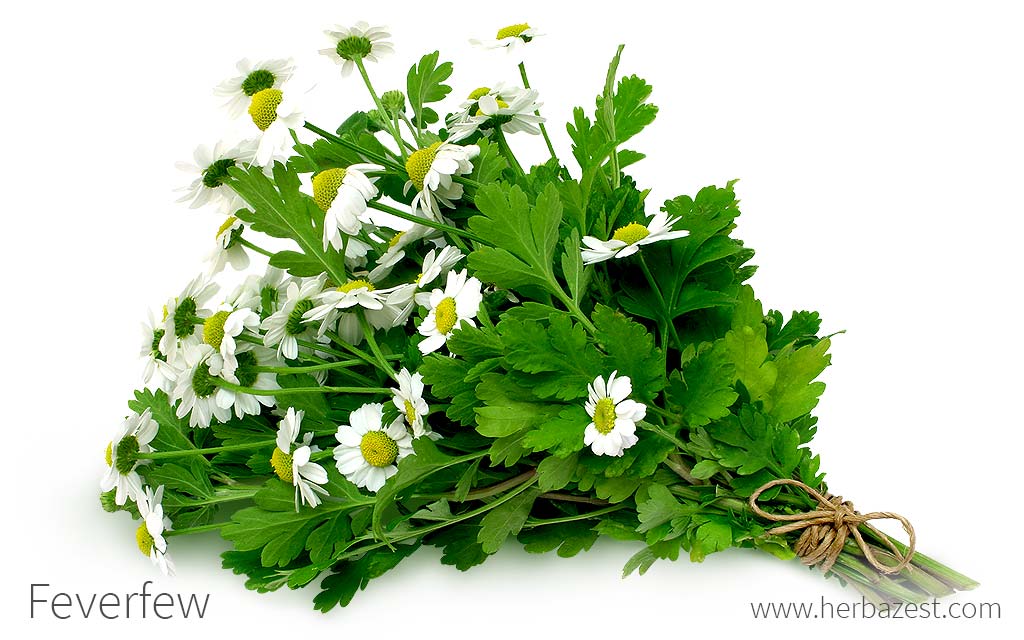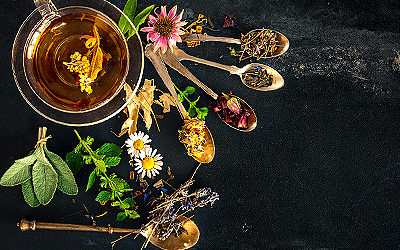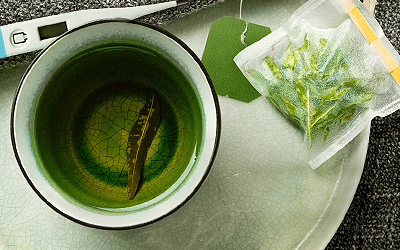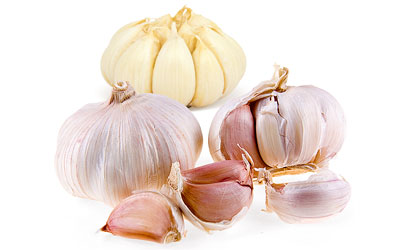Legend has it that common feverfew came to be known as "Parthenium" after an herbal treatment was used to save the life of a man who had fallen from the Greek Parthenon during its construction in the 5th century BCE. Modern research, having supported many of the claims about its health benefits, is at least partially responsible for why the herb remains so highly treasured to this day.
Feverfew Medicinal Properties
- Medicinal action Analgesic, Anti-inflammatory
- Key constituents Parthenolide
- Ways to use Capsules, Hot infusions/tisanes, Tincture, Ointment, Essential oil
- Medicinal rating (2) Minorly useful plant
- Safety ranking Use with caution
Health Benefits of Feverfew
Feverfew has long been regarded as a useful healing plant, with powerful medicinal actions. Its anti-inflammatory and analgesic properties are among its most important qualities, which are translated to its traditional uses. However, the most remarkable science based feverfew benefits include:
Reducing inflammatory pain. Feverfew is well-known for its inhibitory effect on inflammation, and early evidence seems to suggest its usefulness in fighting arthritis and rheumatism.
Relieving migraines. If ingested as soon as symptoms appear, feverfew has been shown to provide effective pain relief to sufferers of migraines and severe headaches.
Other popular feverfew benefits include:
Alleviating menstrual cramps. A natural pain reliever, feverfew is often applied to the treatment of menstrual cramps and may also help induce menstruation.
Treating skin ailments. Early research indicates that feverfew may help to improve the appearance of the skin by reversing cellular damage.
Lowering fever. As its name suggests, feverfew may help to lower high body temperature.
How It Works
The feverfew plant contains a wide variety of natural substances, including sesquiterpene lactones, flavonoids, and volatile oils. Of these, the compound parthenolide is considered the most active. While researchers are still trying to identify feverfew's key mechanisms, parthenolide appears to lower the frequency and severity of migraines through its inhibitory action on the hormone serotonin.1,2
Some research shows that by interfering with the production of key inflammatory substances in the body, feverfew helps to lower pain and swelling. It may also prevent muscle spasms by blocking open potassium channels.
Analgesic properties are also present in herbs like aspen and honeysuckle, whereas ginger and turmeric provide similar anti-inflammatory benefits.
Feverfew Side Effects
Feverfew is mostly safe for oral consumption and topical application; however, discontinuing use after long-term treatment may lead to problems with headaches, stiffness, anxiety, or difficulty sleeping. Feverfew can also act as a contact allergen, triggering skin or mouth irritation in sensitive individuals.
Feverfew Cautions
Feverfew may increase the likelihood of heavy bleeding when taken in conjunction with anticoagulants or other prescribed drugs. Pregnant women are likewise discouraged from consuming medicinal doses, which can trigger uterine contractions and upsets.
Since individual cases may vary, it is important to speak with a medical provider about the role that feverfew could play in one's healthcare regimen.

How to Consume Feverfew
- Edible parts Flowers, Leaves
- Taste Bitter
Because of its somewhat bitter flavor, feverfew's food uses are rather limited. However, while the dried flowers give flavor to some pastries and other dishes, feverfew leaves give herbal teas a distinguished taste. With a higher concentration of the herb's active ingredients, medicinal formulations are among the most useful preparations for consuming feverfew.
Feverfew's leaves and flowers are the primary plant parts used to prepare herbal remedies. They can be used both orally and topically, according to the desired effect.
Natural Forms
Infusion. Warm infusions and decoctions made from feverfew leaves and flowers can be used to ease muscle pain and lower inflammation following overexertion of the body.
Herbal Remedies & Supplements
Tincture. When consumed in medicinal doses diluted in water, this concentrated feverfew preparation can help to lower fever and ward off infections.
Ointment. A feverfew ointment, or salve, can be applied topically to heal unsightly skin problems and to stimulate cellular regeneration.
Essential oil. Extracted from newly-harvested feverfew flowers and leaves, this essential oil can be used in cosmetics, or as a massage treatment for stiff muscles.
Capsules. Made using the dried and crumbled feverfew leaves, capsules are usually taken for long-term migraine prevention, and may be combined with other useful herbs with similar properties.

Growing
- Life cycle Perennial
- Harvested parts Flowers, Leaves
- Light requirements Full sun
- Soil pH 6.1 – 6.5 (Slightly acidic)
- Growing habitat Temperate climates
- Planting time Right after last frost
- Plant spacing average 0.25 m (0.82 ft)
- Potential insect pests Mites
Indigenous to the temperate regions of southeastern Europe, the feverfew plant, also known as parthenium and featherfew, has enjoyed notable success in recent years, and has now been naturalized throughout Europe, Australia, and the Americas. Although it is often found growing wild along woodland borders, roadsides, and waste places, feverfew can be successfully cultivated in the home garden.
Growing Guidelines
Propagated from seeds or via root cuttings, feverfew is best planted in an area that receives direct sunlight all throughout the day.
While it certainly tolerates a range of different growing conditions, feverfew grows best in medium, well-drained soil that is maintained at a pH level of between 6.0 and 6.7.
Plants are spaced at a distance of between 8 - 12 inches (20 - 30 cm) apart.
Targeted cultivation practices may be required to protect young feverfew plants from invasive weed populations.
Feverfew suffers from very few insect problems, but may be susceptible to spider mite colonies.
Because feverfew is a rampant self-seeder, deadheading is a recommended at the end of each growing season.
Additional Information
- Other uses Repellent
Plant Biology
Consisting of long, branching stems and green, toothy leaves, feverfew plants grow to an average of 1.0 - 3.2 feet (30 - 100 cm) in height. Beautiful flower blossoms appear in July, and look similar to those of a daisy, with soft white petals surrounding a bright yellow center.
Classification
Feverfew is frequently referred to by its botanical classification, Tanacetum parthenium. It is a member of the large Asteraceae family, which includes some 25,000 species of flowering plants, such as artichoke (Cynara cardunculus), chamomile (Matricaria chamomilla), dandelion (Taraxacum officinale), and milk thistle (Silybum marianum). Spread out across 1,500 genera, plants of this family are known for their complex inflorescences, which are made up of hundreds of minuscule florets that appear as one.
Varieties and Subspecies of Feverfew
Feverfew is closely related to tansy (Tanacetum vulgare) as well as to some other species of chrysanthemum and chamomile. The following are among the most widely-available feverfew cultivars out there:
'Snowball'. This is a double-flowering feverfew variety, so called because it has twice as many white petals as common feverfew.
'White Pompom'. With very long stems that are perfect for harvesting floral arrangements, this heavy-blooming variety has a lower concentration of parthenolide.
'Flore Pleno'. This is a double-flowering feverfew with a tiny yellow disk. 'Golden' or 'Aureum'. As its name suggests, this dwarfed cultivar is known for its goldish leaves. It grows no taller than 12 inches (30 cm) usually.
Historical Information
Considered by many historians to be a potent medieval aspirin, feverfew was used by ancient Greeks and Romans for pain and fever relief. The 17th-century British scholar Nicholas Culpeper upheld the herb's value in treating miscarriages, colic, and opium addictions. In his 1653 handbook, The English Physician, he contends, "[feverfew is] a general strengthener of [the] womb...and doth the woman all the good she can desire of a herb."
Cultivating feverfew for its healing powers is nothing new; however, it wasn't until the 1980's that feverfew would attract scientific interest, with an increasing number of clinical trials exploring its efficacy as an alternative treatment for chronic migraines.3,4
Economic Data
Each year, Americans spend an estimated 1,757 USD per person on episodic migraines, and nearly 7,750 USD on frequent attacks. In recent years, feverfew has emerged as one of the leading herbs for chronic migraine prevention, asserting itself as an important and inexpensive alternative source of care.
Other Uses
Gardening. A delight to behold, feverfew's attractive, daisy-like flower blossoms can be grown for pure ornament in the home garden.
Insecticide. Also, believed to hold effective insect-repellent properties, it is sometimes made into products and home remedies intended to protect pets from run-ins with irritating pests.
Feverfew is a slow-growing, low-maintenance herb with a long history of use in natural medicine. With soothing anti-inflammatory and pain-relieving properties, feverfew makes a wonderful addition to any home garden or alternative healthcare regimen.
Sources
- Missouri Botanical Garden, Tanacetum parthenium ‘Aureum’
- Penn State University, Home, lawn, and garden: Feverfew
- The Whole Herb, pp. 149-151
- Encyclopedia of Herbal Medicine, p. 140
- NCCAM Herbs at a Glance, Feverfew
- Encyclopedia of Natural Medicine, pp. 663-664
- The Herb Book, pp. 191, 543
- Rosemary Gladstar's Herbal Recipes for Vibrant Health, pp. 87-89, 332, 380-388
- Kew Royal Botanic Gardens, Compositae (Asteraceae)
- University of Maryland Medical Center, Feverfew
- Pharmacognosy Reviews, Feverfew (Tanacetum parthenium L.): A systemic review, 2011
Footnotes
- Molecules. (2019). The Anti-Serotonin Effect of Parthenolide Derivatives and Standardised Extract from the Leaves of Stizolophus balsamita. Retrieved June 28, 2023, from: https://www.ncbi.nlm.nih.gov/pmc/articles/PMC6891796/
- Chemistry & Biology. (2001). The anti-inflammatory natural product parthenolide from the medicinal herb Feverfew directly binds to and inhibits IkappaB kinase. Retrieved June 28, 2023, from: https://pubmed.ncbi.nlm.nih.gov/11514225/
- The Lancet. (1988). Randomised double-blind placebo-controlled trial of feverfew in migraine prevention. Retrieved July 7, 2023, from: https://pubmed.ncbi.nlm.nih.gov/2899663/
- British Medical Journal (Clinical research ed.). (1985). Efficacy of feverfew as prophylactic treatment of migraine. Retrieved July 7, 2023, from: https://www.bmj.com/content/291/6495/569.short
